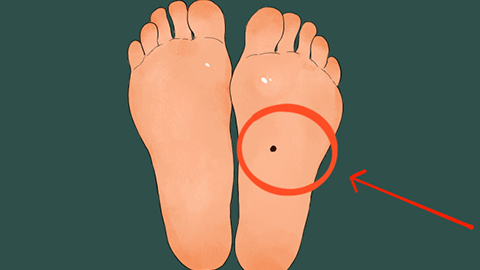What are the acupressure points for foot massage?
Generally, foot massage works by stimulating specific acupoints on the soles of the feet to regulate the circulation of qi and blood, thereby achieving therapeutic and health benefits. Common acupoints used in foot massage include Yongquan (KI1), Taichong (LR3), Taixi (KI3), Zusanli (ST36), and Yanglingquan (GB34). A detailed explanation is as follows:

1. Yongquan (KI1)
Yongquan is located in the anterior depression of the sole, at the intersection point on the line connecting the base of the second and third toe webs to the heel. As the starting point of the kidney meridian, this acupoint, when stimulated, can nourish yin to support yang, benefit the internal organs, calm the mind, and improve physical well-being. It also helps replenish kidney essence and strengthen the body's overall vitality. It is commonly used to regulate the body's yin-yang balance and treat symptoms such as dizziness, headache, insomnia, and cough.
2. Taichong (LR3)
Taichong is located on the dorsum of the foot, in the depression between the joint of the first and second metatarsal bones. This acupoint belongs to the Liver Meridian of Foot-Jueyin. Stimulating Taichong can help clear heat, protect the liver, promote circulation of qi and blood, remove dampness, and relieve pain. It is commonly used to treat conditions such as irregular menstruation, headache, dizziness, sore throat, and stroke.
3. Taixi (KI3)
Taixi is located on the medial side of the foot, in the depression behind the medial malleolus and between the Achilles tendon and the heel bone. Taixi belongs to the Kidney Meridian of Foot-Shaoyin. Massaging this acupoint helps regulate the function of the spleen and stomach, promote digestion and absorption, and improve conditions such as indigestion and loss of appetite caused by spleen deficiency. Additionally, it nourishes kidney yin, strengthens the body, and is used to treat frequent urination, excessive urination, kidney disease, bronchitis, and arthritis.
4. Zusanli (ST36)
Zusanli is located on the inner side of the ankle, approximately four finger widths above the tip of the medial malleolus. Zusanli is a commonly used acupoint for strengthening and health preservation. Massaging this point can enhance immunity, regulate the digestive system, relieve fatigue and muscle soreness. Moreover, it plays a good preventive role in cardiovascular and cerebrovascular diseases such as hypertension, heart disease, pulmonary heart disease, cerebral hemorrhage, and arteriosclerosis.
5. Yanglingquan (GB34)
Yanglingquan is located on the medial side of the dorsum of the foot, three cun above the upper edge of the tibia, and one finger width from the anterior border of the tibia. Massaging Yanglingquan helps relax tendons and improve circulation, effectively relieving knee joint pain and inflammation. It is commonly used to address knee joint problems.
When performing foot massage, one should follow the correct techniques and methods to avoid discomfort caused by excessive stimulation or improper use. In addition, foot massage should be avoided for patients with hemorrhagic diseases such as cerebral hemorrhage and internal bleeding, as well as for special populations such as pregnant women.







